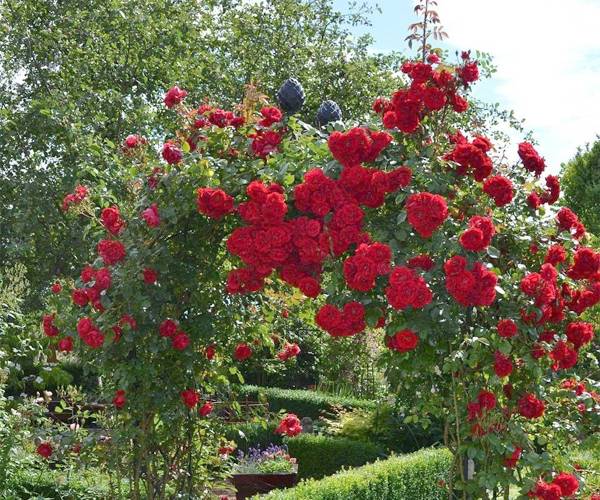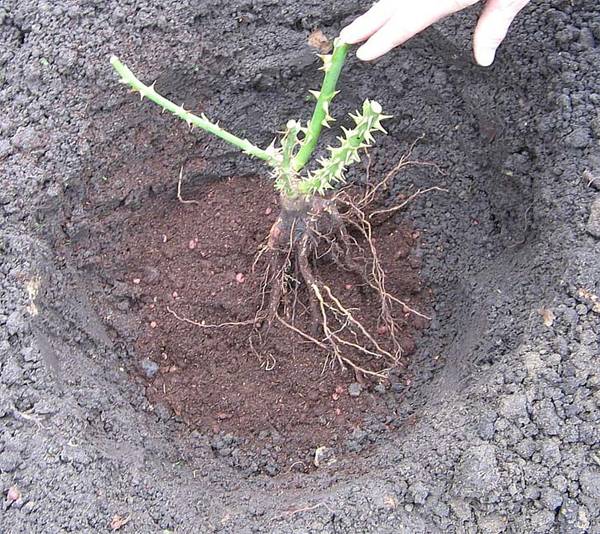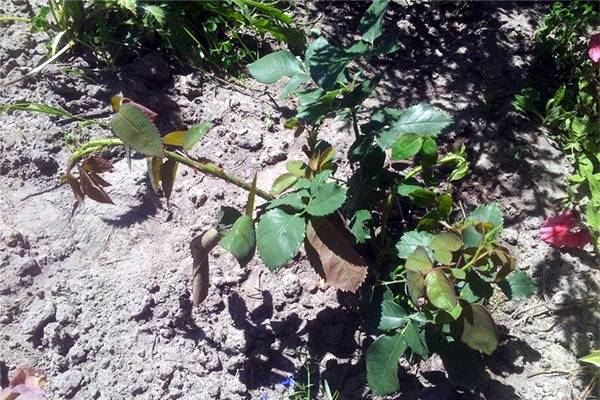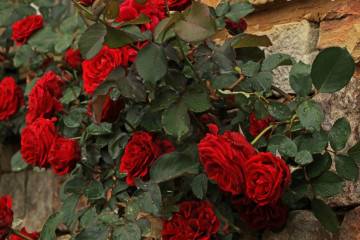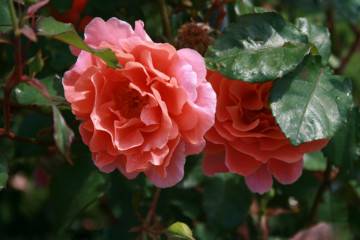Rose Amadeus
Content:
The Amadeus variety was bred in 2003 by breeders from Germany. The rose has a delicate scent, blooms in early spring and blooms profusely before the first frost. This culture can be seen in many home gardens.
Main characteristics and description
Amadeus roses are the smallest among climbing roses. They grow up to only 3 meters. The bush can reach 2 meters in diameter. The main advantage is resistance to the influence of scorching sun rays. The bright red flowers of the Amedeus rose look spectacular against the background of dark green foliage.
Gardeners use climbing roses to decorate terraces, gazebos, fences and gates. This variety is no less popular with landscape designers: arches, all kinds of supports, decorative handrails, balconies and columns of buildings are entwined with flowering shoots of climbing roses and clematis.
Types of seedlings
Novice growers prefer to buy planting material grown in containers. Such seedlings do not need additional manipulations and fertilization. Container roses are already fertilized, they can be planted in open ground with the ground, regardless of the season.
Saplings of the climbing rose Amadeus can be bought without a container - in the form of leafless shoots with rhizomes. Planting material of this type is acquired before the beginning of spring sap flow or after the end of autumn leaf fall and immediately planted in open ground, having previously shortened too long shoots.
How to choose a seat
Having decided on a place for a rose garden, the site owner should make sure that the groundwater in the selected part of the garden does not rise above one and a half meters. If the rose bush is flooded, it may die. In wetlands, the soil is drained - an additional layer of earth is poured.
If the soil intended for planting Amadeus roses is rich in sand, it is fed with organic humus from compost manure or waste that is formed as a result of the gardener's activities on the garden plot. Bacteria living in organic fertilizers improve the composition of the sandy soil.
In order for young bushes to grow quickly, the planting site is cleared of weeds (especially perennial ones) and saturated with nutrients (for example, black soil).
How to plant a rose bush
Before planting, the plant is immersed in a solution of potassium permanganate, and the location of the buds is sprinkled with charcoal.
Then the rose is dipped in a phosphorobacterin solution (2 tablets per bucket of water), mixed with mullein and clay.
After that, the seedling is lowered into the hole, the roots are straightened and positioned so that the root neck rises 3-4 cm above the ground level.
After compacting and moistening the soil around the seedling, it is cut so that about 20 cm of the stem remains on the surface.
How to care
Regularly, three times a year, the Amadeus rose must be fed with fertilizers containing nitrogen (in spring), phosphorus (in summer) and potassium (in late summer or early autumn).Fertilizers are scattered in the area of the trunk circle in a proportion of 3 g per kilogram of an imaginary earthy coma.
Complex mineral fertilizers containing chlorine are not suitable for roses of this type.
To increase the number and size of flowers, foliage is sprayed with mineral fertilizers simultaneously with root dressing. As a result, there is an activation of internal biochemical processes that contribute to the development of the terrestrial parts of the plant.
Watering is carried out once a week with warm water. In dry summers, the Amadeus rose should be watered frequently and in large quantities. After the end of the flowering period, it is recommended to immediately remove the dried flowers and inflorescences. If this is not done, the rose bush may not bloom next year.
In spring, the crown of the plant is thinned out by removing weak shoots, as well as those that grow inside the crown.
When the air temperature drops to -5 ° C, the bushes are covered with spruce branches, having previously been bent to the ground with the help of fixing pegs. Sprinkle the base of the bush with soil. In this form, they are left to winter, after cutting off the shoots to the 6th bud.
Care during and after flowering
If the rose bush is not sick with anything, it blooms twice a season. In most cases, the first flowering goes into the second. The first flowers appear in mid to late May. The final flowering period ends with the onset of frost. Thus, the plant is covered with flowers for almost the entire season. The buds are large, collected in inflorescences like bouquets. Each flower has a pleasant, subtle scent. The buds are classical in shape, consist of 42 petals.
A blooming rose needs to be watered twice as often as usual - twice a week with warm water. After the end of the flowering period, the plant is looked after according to the usual rules:
- mulch the ground with grass mixed with humus, straw and sawdust;
- cut off shoots with dried flowers;
- fertilize.
The climbing rose Amadeus stops blooming for a number of reasons:
- she was planted in a place inaccessible to sunlight;
- there is too much sand and few nutrients in the soil where the rose bush is planted;
- the plant has been attacked by garden pests or infections;
- the rose has not been trimmed for a long time and has not been freed from dried and old branches.
How to propagate a climbing rose
The easiest way to propagate the Amadeus rose is by layering. In the spring, in the month of May, the shoot is instilled, and a year later it is cut off from the parent bush. The sprouted cuttings are transplanted to a new place.
If you plant cuttings in an open area, constantly illuminated by direct sunlight, the bush can grow so much that it obscures the sunlight of other crops.
Infectious diseases and garden pests
In arid regions, this variety of roses can be threatened by powdery mildew, spotting and late blight.
Protection against fungal infections is reduced to treatment with fungicides (for example, drugs such as "Skor", "Maxim" or "Quadris"). Of the garden pests, the most dangerous for Amadeus are aphids, speckled moths, spider mites and kidney mites. Having found dried and twisted foliage on the plant, the florist must immediately remove and burn it.
Pests can start not only in the foliage of a rose, but also in the ground. The Amadeus rose is attacked by the most dangerous enemies - scoops and beetles - since the second half of April. To combat soil pests, the gardener should stock up on drugs that include imidacloprid. The stem of the rose is also subject to processing (the recommended spraying height is 10 cm above ground level). It is important to avoid splashing the preparation.
The frequency of soil treatment is once every 40-50 growing days. The trunk is processed from May to September, twice a month.
The Amadeus variety is rapidly gaining popularity among domestic gardeners. Flower lovers note the beauty of the buds and the relative unpretentiousness of the plant. A pleasant aroma is also a significant plus when choosing this rose.
